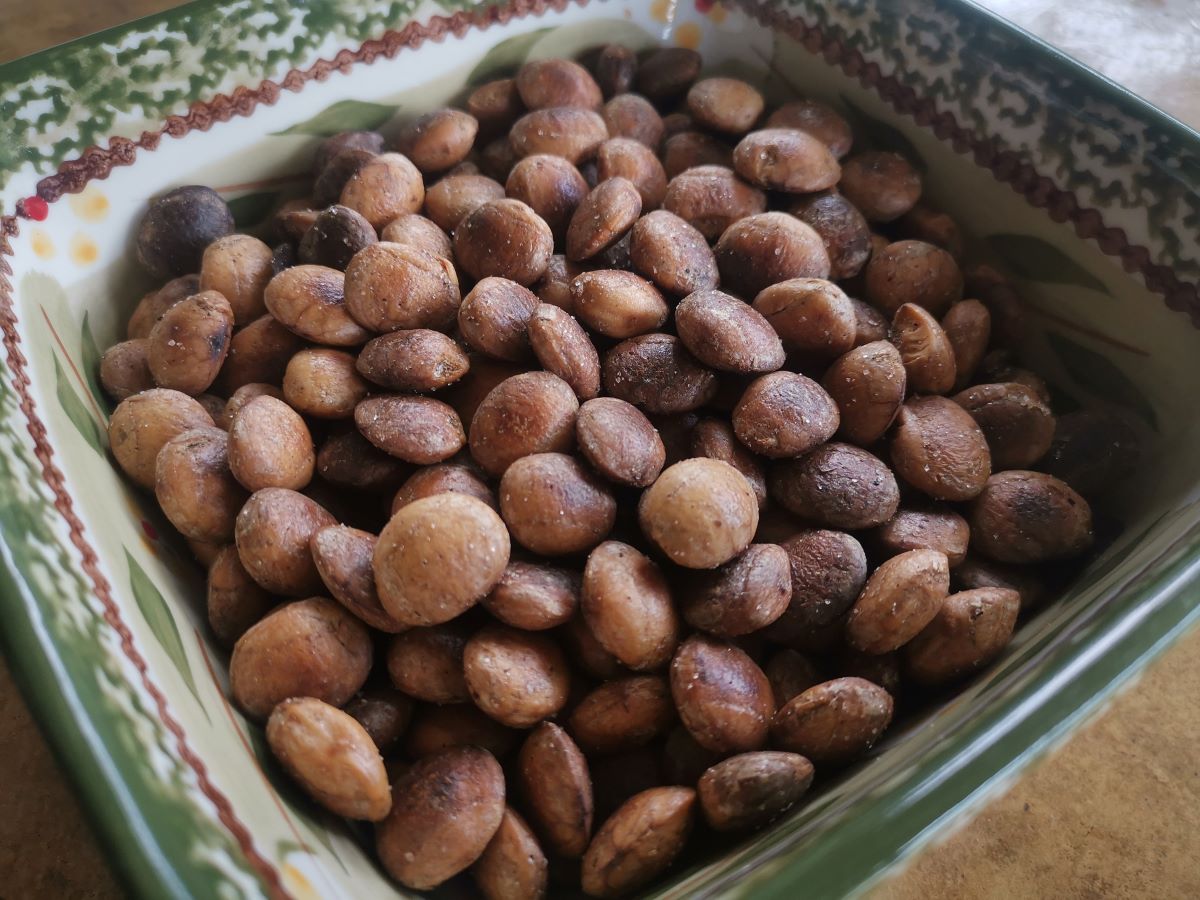Have you ever tried the SUPERFOOD that is sacha inchi? These delicious nuts are favorites of ours, and we LOVE that we can produce them ourselves!!!
Sacha inchi (Plukenetia volubilis) goes by a few other names….
- Sacha peanut
- Jungle peanut
- Inca nut
- Inca peanut
- Mountain peanut
Although they are native to the Peruvian jungle of South America, they grow well in our moist, tropical climate as well here in Costa Rica!
Super delicious SUPERFOOD!
They are also nutritional powerhouses!
Not only are they rich in omega 3, 6, & 9 fatty acids & vitamin E1, they are also a complete protein. In fact, these nuts are the first plant protein discovered to contain all of the essential amino acids that a person requires!!!2 Now, that is one incredible fruit!!!!
Recent research also suggests this amazing jungle peanut may also have anti-tumor activity, like that of fish oil3!
Many people take fish oil for the omega 3 benefits, and sacha inchi is also an excellent source of this essential fatty acid. It is also vegan, and if you live in the right climate, you can grow and produce your own!
A serving of sacha inchi is 10 grams (around 12 nuts) and provides the following nutritional content:
- 70 calories
- 5 g fat
- 3 g protein
- 1 g fiber
- 0 g sugar
- 20 mg calcium (2% RDA)
- 0.36 mg iron (2% RDA)
These seeds are also processed to make oils, cereals, and even protein powders!
Special note though… these nuts can be toxic when raw, but they are safe, healthy, and delicious when roasted!
Pin it now to save it for later!
Unique looking sacha inchi fruit!!

These fruits look otherworldly! In their immature stage, they are green and are completely closed. However, when they mature (and are ready to harvest), these pods turn brown, dry, and burst at their bottom seams!!!

How we harvest sacha inchi nuts
Each fruit contains usually 4 to 6 seeds, and now we just need to crack them open!!!
First, though, we want to break the pods into individual sections, so we can get inside.

Now, ideally these seeds get a little sun!

You see, if we are lucky, the sun will crack these babies open, making our work a bit easier! And you can literally hear them pop, pop, pop open!!!
However, when it is raining, we place the sacha inchi in the dehydrator for a few hours at 105 degrees Fahrenheit (41 degrees Celsius) to help make them easier to crack open.

So, we’re done then, right?
Nope… sorry to say, there is one more layer to go before we reach the payload!
After cracking open that last layer, a beautiful white nut is revealed!

Let’s get roasting!
Now, remember that the sacha inchi nuts can be toxic when eaten raw, so we need to roast them!
We roast our sacha inchi in a skillet over medium low heat for around 20 minutes, stirring constantly. We also like ours with a little olive oil and salt, so we add those in when we start them cooking.
Make sure you continue cooking the sacha inchi until the inner part of the nut is crunchy.
Once they are done, transfer them to a cookie sheet or plate and let them cool to room temperature in a single layer. You will hear them snap, crackle, & pop as they cool as well!
Once they cool, transfer them to a sealed container or dig in right away!!!!

We enjoy these delicious treats as is… or in homemade trail mixes. YUMMMM!!!!!
These are definitely our favorite nuts! They taste like a mixture of popcorn, peanuts, and roasted pumpkin seeds all in one! The ultimate snack superfood!!!!
Can’t grow your own jungle peanuts?
No worries. They are also available in various forms at health food stores and online, including roasted seeds, cold-pressed oil, and protein powder.
Check out our sacha inchi video!
Wanna see how we process sacha inchi nuts here at Cold River Homestead? Check out our video below!
- Cárdenas DM, Gómez Rave LJ, Soto JA. Biological Activity of Sacha Inchi (Plukenetia volubilis Linneo) and Potential Uses in Human Health: A Review. Food Technol Biotechnol. 2021 Sep;59(3):253-266. doi: 10.17113/ftb.59.03.21.6683. PMID: 34759758; PMCID: PMC8542186. ↩︎
- https://www.thegreenlabs.com/what-is-sacha-inchi/ ↩︎
- Schiessel DL, Yamazaki RK, Kryczyk M, Coelho I, Yamaguchi AA, Pequito DC, et al. α-Linolenic fatty acid supplementation decreases tumor growth and cachexia parameters in Walker 256 tumor-bearing rats. Nutr Cancer. 2015;67(5):839–46. 10.1080/01635581.2015.1043021 ↩︎


Leave a Reply